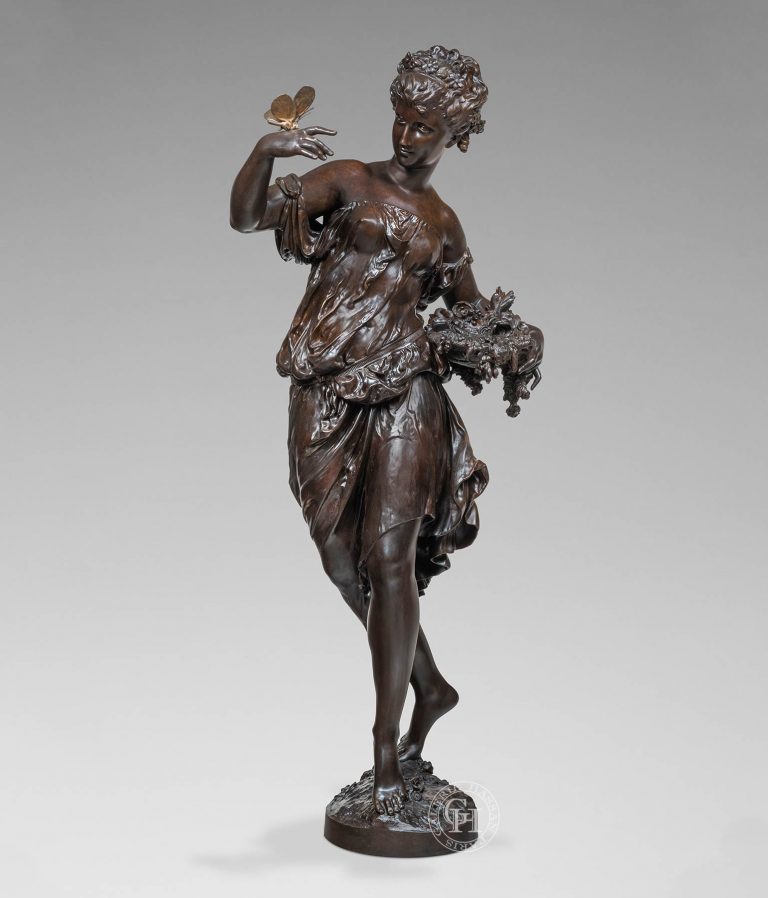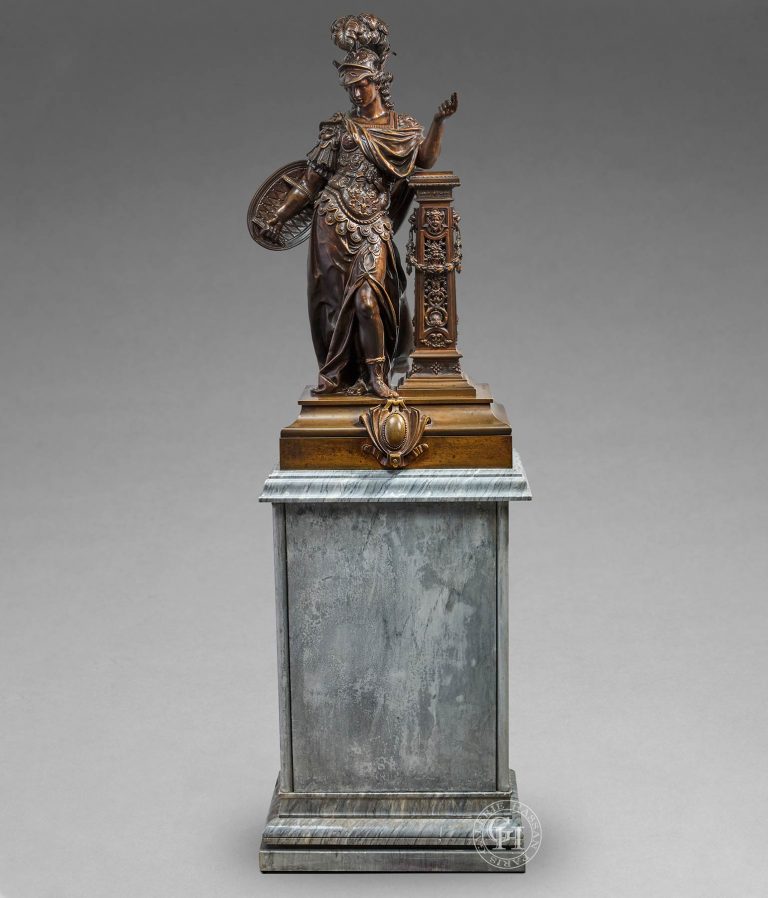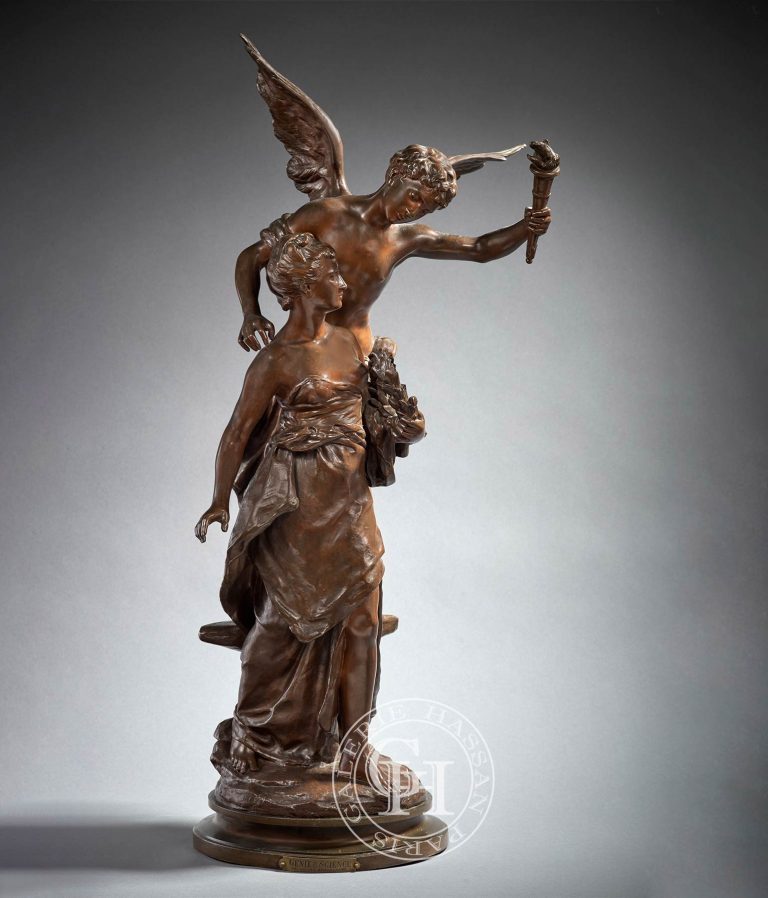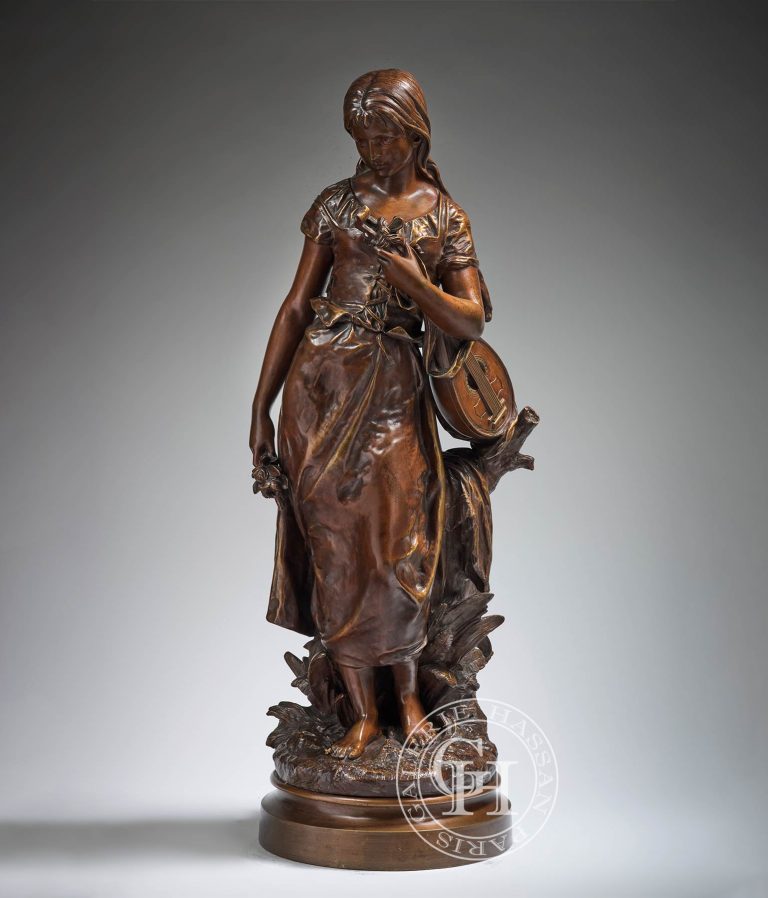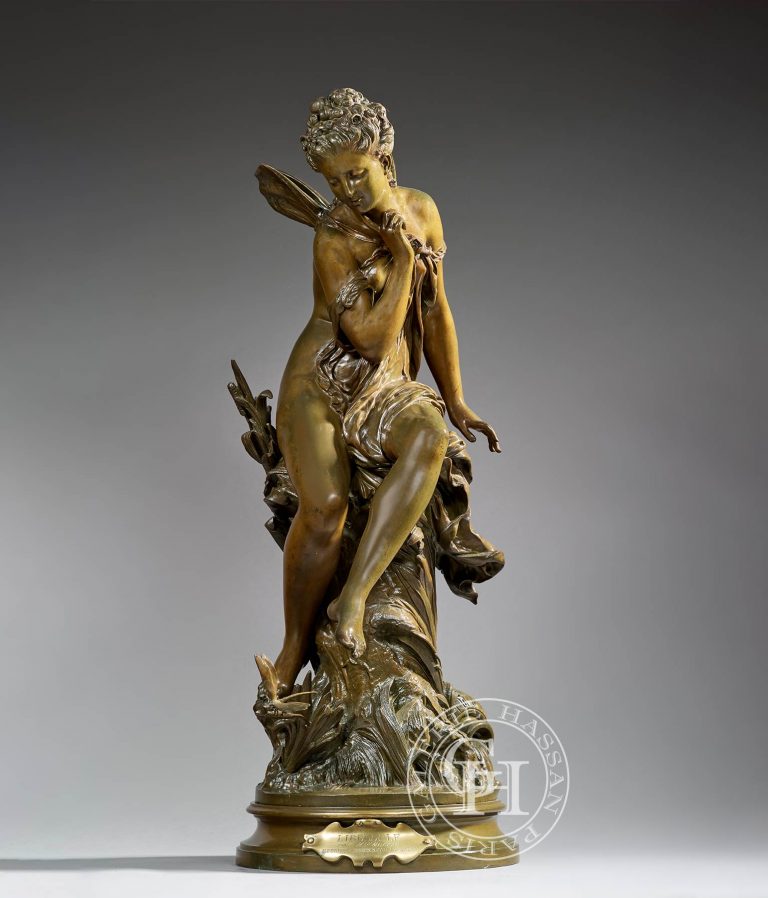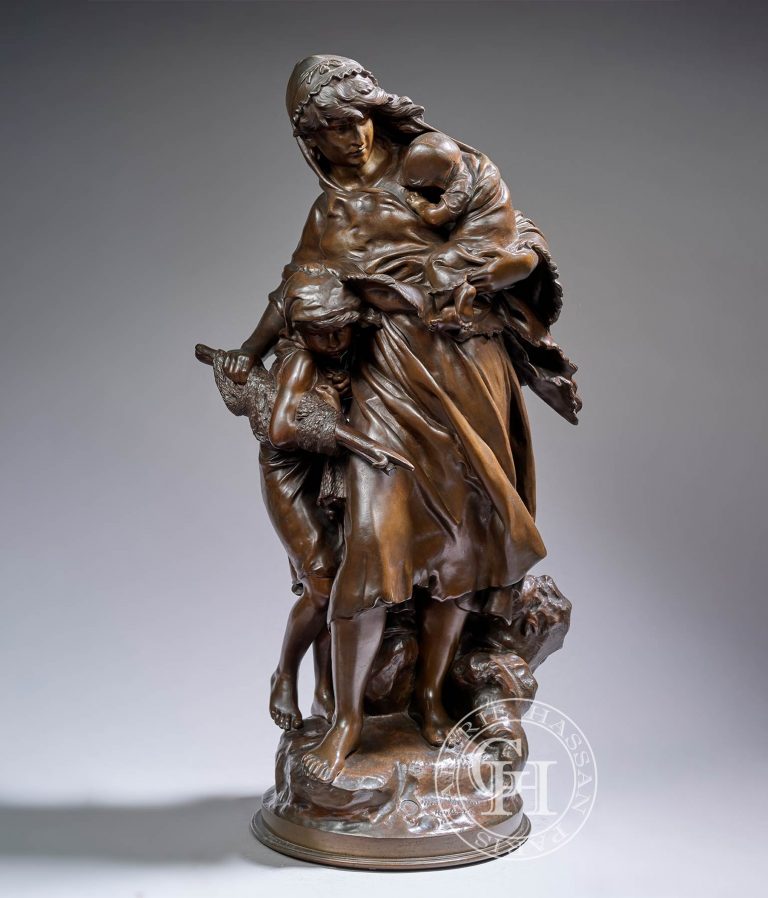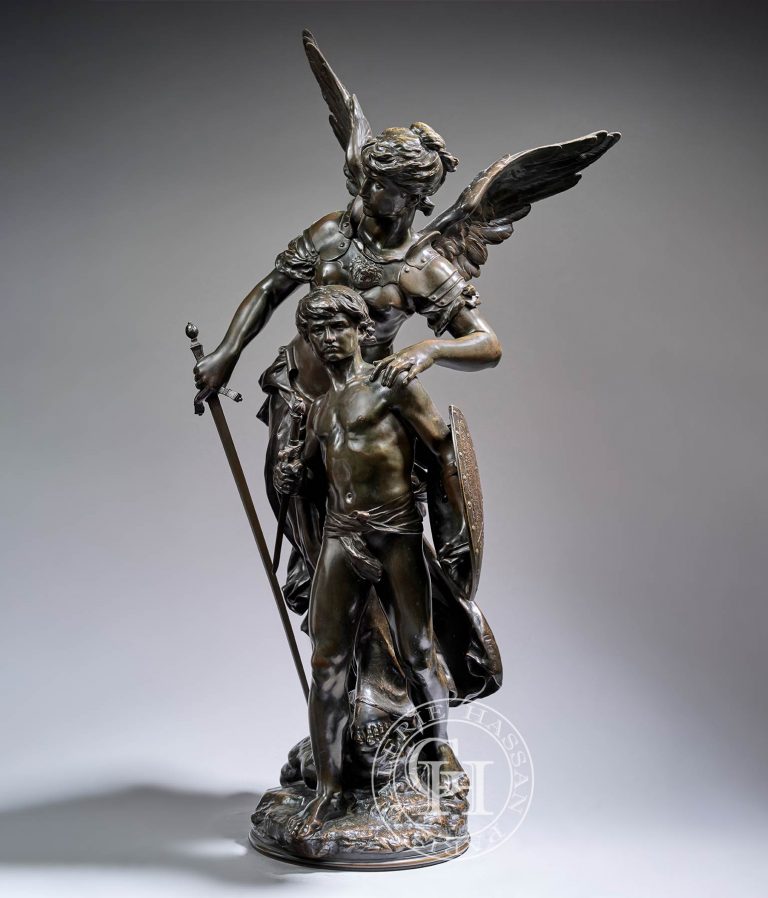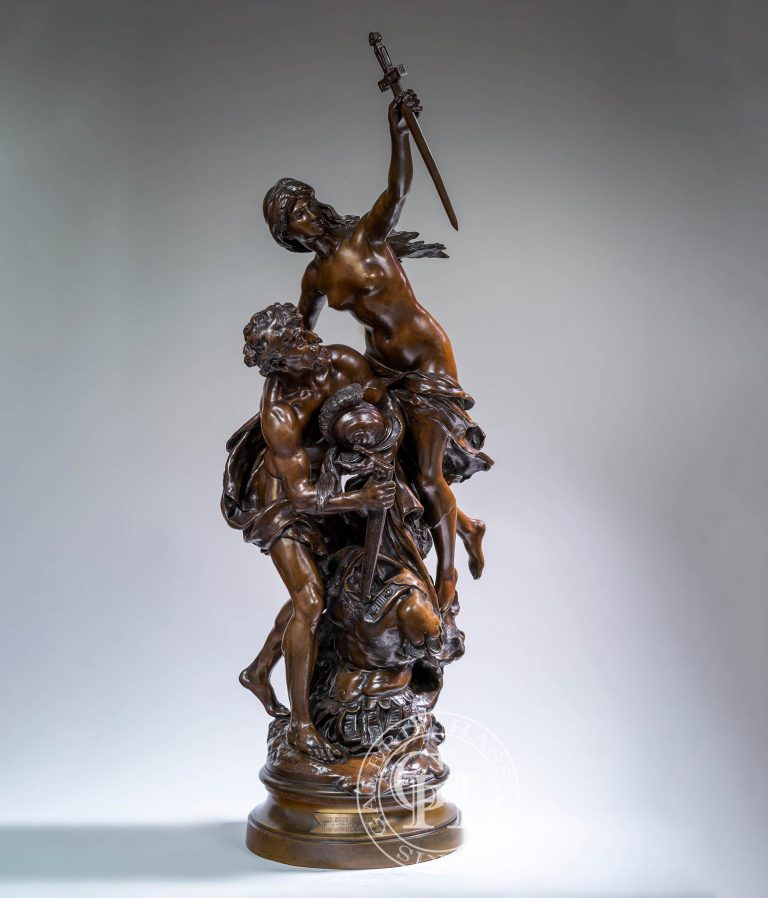Sculptor
Moreau Mathurin
1822-1912
Son and student of Jean-Baptiste Moreau, restorer of the famous tombs of the Dukes of Burgundy, he entered the school of fine arts of Paris at the age of nineteen. There he studied under the direction of Ramey and Dumont. He obtained the second price of Rome in 1842 with Diomède enlevant le palladium and he manifested himself for the first time at the Salon in 1848 where he received many distinctions. Around 1850, he started working for the Val d’Osne foundry where he became one of the administrators and supplied a number of models destined to cast iron statues.
The work of Mathurin Moreau consists of a number of memorials, tombs, and a great amount of statues and busts of important persons.
He worked for the Church of ‘Saint-Augustin’ and ‘La Trinité’, the opera, the law courts, the city hall, the Tuileries, the Marsan pavillon at the Louvre, the ‘Gare du Nord’ (northern station of Paris), on one of the fountains of the ‘place du Théâtre Français’ (the French theater square)- ‘statue of the fluvial nymph,’ etc.
His work also consists of a great amount of statues, statuettes, and a group of pleasant and decorative themes which met a great succes.
At the Salons, Mathurin Moreau exposed a number of bronzes: La Fée aux fleurs (1853), L’Étude et fileuse (1859), Libellule (the 1873 Salon), Protection de l’enfance (1892), Le Torrent (1901). Additionally, in the small statuettes and small series in marble register: Baigneuse (1976), La Source de jouvence (1909), and Joan of Arc (1891).
Most of his work and many more works not shown at the Salon, were produced in bronze by different founders. This can be seen through the number of pieces available on the market or which are conserved in museums. However, it is difficult to identify them due to the big fantasy that exists concerning their designation.
Let’s however point out some editions that were made by Susse: La Charmeuse, La jeune fille à le fontaine, Le Réveil du Printemps. We also know some bronzes made by E. Colin (Moissonneuse), by Godeau and by Berneaux.

